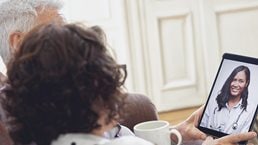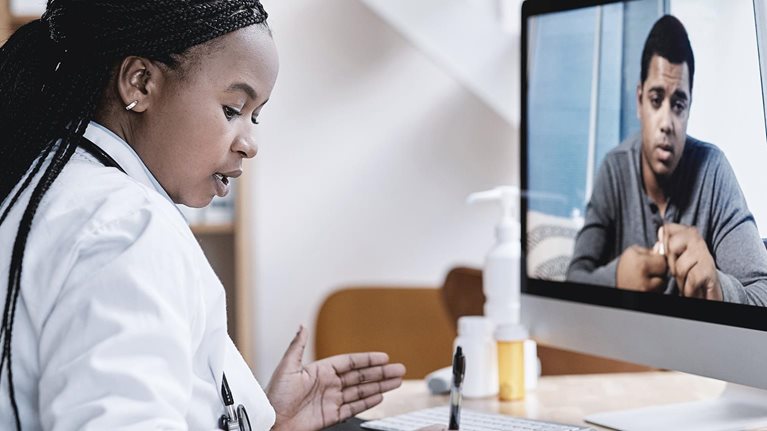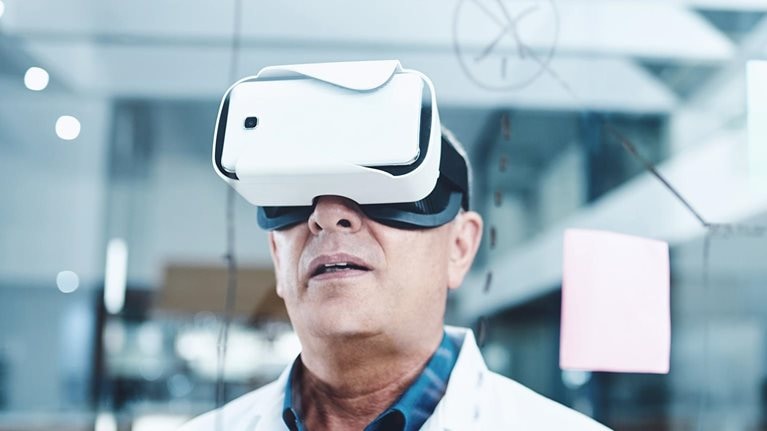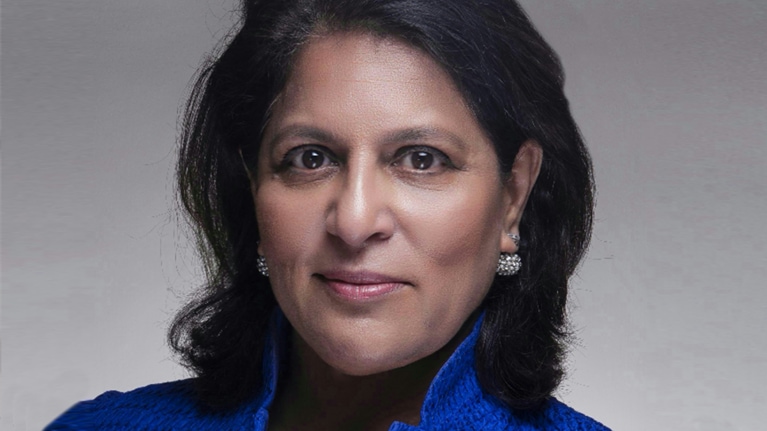COVID-19 reshaped how providers, patients, and healthcare stakeholders approached healthcare. Amwell, a major telehealth company headquartered in Boston, saw its provider usage jump from 5,000 to 72,000 in less than a year, and is now launching Converge, its next-generation, open architecture platform that can enable further connectivity between healthcare stakeholders and foster innovation through integrating a wide range of third-party services.
Amwell chairman and co-CEO Dr. Ido Schoenberg joined McKinsey’s Ulrike Deetjen virtually from Israel to discuss how “telehealth” is now really “health,” and how digitization of healthcare can improve access for all. An edited transcript of their conversation follows.
Ulrike Deetjen: Ido, you have driven digitization in the healthcare sector throughout your entire career. How did you as a MD become a healthcare tech enthusiast?
Ido Schoenberg: To be fair, my parents were quite disappointed that I was not going to be in the clinic every day. I explained that we can cure many more people with technology than we can doing it in person. The mission of bringing care to people and improving their outcomes was the same; we just felt that we could do it in a different way.
Ulrike Deetjen: What brought you to founding Amwell?
Ido Schoenberg: At the time, most people were very focused on health records, moving from paper to electronic and things of that nature, and we strongly felt that that’s not the biggest challenge. We felt that the biggest challenge in healthcare is access. Most people can’t see the doctor they need to, and back then, more than 15 years ago, online retail was just beginning.
We felt that if you can take a bit from retail innovation and inject it into healthcare, we could really help a lot of people. We spent three months in a room with lots of white boards, enlisting a long list of reasons why that could never happen in healthcare, and all the barriers. It was rather discouraging. When we were done, we decided to nevertheless take the plunge. In hindsight, we even underestimated the challenges, despite the fact that the room was filled with red ink!
Ulrike Deetjen: What were the challenges that you underestimated?
Ido Schoenberg: Making telehealth safe, making it legal in different states in the United States, building enough evidence to show that telehealth should be a covered benefit, getting the doctor comfortable treating patients far away, getting people comfortable knowing they can get care online, making this entire thing simple at a time when we still had USB cameras that we had to connect to our computers and learn those systems. These things were so complicated back then! Today, people largely don’t think twice about video conferencing.
The biggest challenge of all is psychological, and in some respects, I don’t think we have completely overcome these challenges. There is magic in the physical interaction between doctor and patient, especially in times of great fear, or great need, and technology is not completely there yet. But we are working really hard to make sure we get as close as possible so we can provide a lot of value.
I also want to point out that I don’t believe, and we have never believed, that digital connectivity would replace physical interaction. We always believed that the answer is a hybrid solution, where sometimes there are things that you do in person, but other things that you can envelope with technology to create an overall experience that is infinitely more accessible and more efficient.
Ulrike Deetjen: How have you at Amwell experienced the COVID-19 pandemic?
Ido Schoenberg: It was a terrible period in every way—personally, emotionally, economically. At Amwell, no one could have predicted the velocity of the need. We had to grow our platform ten times, both in our technology and services; it’s very unusual that you have to do this almost overnight, and our people truly worked around the clock.
There were people that really didn’t sleep much for months to support the crisis, and people volunteered to do that from their kitchen desktops—because they understood they were truly saving lives by bringing care to people. It was very much about the mission and the value of what we do, and we prevailed. We went up to more than 40,000 visits a day at the height of the pandemic. The number of active providers on our platform grew from 5,000 to 72,000 in less than a year, and there are many other KPIs that all shot up dramatically.
In hindsight, it was a silver lining in the sense that COVID-19 helped us overcome the final barriers to online care—only because there was no other choice. People were locked in their homes, doctors were locked in their homes—they had to connect online. And the entities that enveloped it and surrounded it—payers, employers, and others—had to join to create coverage, to create permissibility regarding this modality.
So many people—and not only patients, but also doctors and nurses and other providers—were exposed to the enormous value and impact of virtual care, that I think we are very unlikely to go back at this point. There is so much upside for everybody, including insurers, because this modality of care is enormously more efficient; it’s also enormously more democratic. A lot of care is much less accessible if you don’t live in a big city, if you cannot afford the best doctor. When care moves online, it democratizes those services. It allows someone in a small town to virtually get the same services as someone who is much closer to these centers and that’s not lost on the community, that’s not lost on politicians, on governments, on large corporations, or individuals.
I believe the strong tailwinds that we see are persistent: from a state of necessity, we are now looking at acceptance of the legitimacy of online connections as the main pathway of healthcare. It’s no longer “telehealth,” it’s really “health.”
Ulrike Deetjen: Do you think the democratization also applies internationally beyond the borders of the United States?
Ido Schoenberg: Absolutely. I think that the unmet need is true anywhere around the world, in the sense that when you look at the participants in healthcare, one of the biggest sources of inefficiencies is fragmentation. There is an enormous amount of duplication: I am seeing multiple people that I don’t necessarily need to see because of location-driven and other considerations. When you virtualize the access to those services, you don’t change those services, but you basically allow them to be available through electronic switchboards.
When you think about telehealth as connectivity enablement, you understand that it is a universal challenge that is available anywhere. The platform we recently introduced—Converge—has many attributes, but one of them is that it is designed so it can be available anywhere in the world to help many people interact. To me it’s a very encouraging message, because of our opportunity to leverage innovation not only in the United States, but anywhere in the world. We can now take breakthrough ideas on how to envelope technologies around normal interactions and make them available to many more people using a unifying infrastructure.
We used to think about our world as connecting the key cohorts, which are providers, payers, consumer-facing companies, and others. With Converge, we have a new cohort: the innovators. We opened up our platform so that anyone with an idea does not have to recreate what we created over the past 15 years. It’s a big investment in technology and capabilities to expose all those APIs so people can use them, but it means being able to give innovators the opportunity to connect with the players that are already connected to the Amwell platform. We are providing a great accelerator and if effective, these innovators can quickly create impact by connecting what they bring into a much bigger whole.

Telehealth: A quarter-trillion-dollar post-COVID-19 reality?
Ulrike Deetjen: What would you say is the biggest change with the introduction of Converge?
Ido Schoenberg: Converge is a big platform with many uses. One of its attributes is its single code base for all the ecosystem players. Essentially as an individual, I want access to the health system to be as simple and as intuitive as possible. We just talked in our latest conference about using TV boxes: You can activate it with your voice, which is a very simple interface, but it’s really smart and powered by artificial intelligence. This care point is now part of our one platform and connected to our entire ecosystem. So, one of the biggest advantages of Converge is making sure that digital connectivity is part of the main pathway of healthcare and is democratically available to everyone.
The second point of Converge is the realization that the model of care is changing. Today we collect much more information, analyze it in real time, and create new care plans, assuming that healthcare comes to people versus people go to healthcare. Healthcare is present in our lives all the time, it’s data driven, and when necessary, providers can interact with their patients, and patients can interact with their trusted providers to receive a personalized intervention directly at home. Converge allows us to move from the experience of telehealth as a transaction (“I have a headache, I go online, I wait, I see a doctor, I get a script”) to a longitudinal presence in my life. Sometimes a patient may get a nudge, another time they may talk to a nurse or speak to their doctor—it’s about powering a longitudinal care experience over time. The understanding that the interaction model of care is changing, is designed into the basis of the platform.
Another point of Converge is that it does not assume the last mile is owned by Amwell. We assume doctors are using their own electronic medical records, their own practice management system, and people will use any type of digital door to interact with the health system. We just created a layer that is designed to be integrated into existing digital assets—that is very important, because it does things like dramatically lower the customer or the user acquisition costs.
Ulrike Deetjen: What achievement are you most proud of with Converge?
Ido Schoenberg: I really celebrate the fact that you can develop apps on Amwell. We recognize, with a due amount of modesty, that we cannot invent everything ourselves. There are so many smart and innovative parties—some are very big, like Google, and some are smaller, like Biobeat or Tyto. The idea is that when we believe that our role is simply to be the plumber, and allow other people to create these innovations, it’s a win for everybody in the ecosystem.
When we created this giant platform, one of the biggest challenges we had was keeping it simple, even when enabling complicated care in the home. We took a page from what Apple did with the MacBook Pro and have this keyboard that changes in the application that you use. It’s context-sensitive navigation, so you see only the patterns, the pathways, the things that you need to see for the task that you are carrying out right now. It’s much more complicated than it sounds, but it allowed us to create one meeting place and one user interface.
We believe a significant part of healthcare will be done on our platform. After COVID-19, we vowed to never be surprised by a dramatic influx of care being conducted on our platform so we built Converge as a platform that could easily become a real part of healthcare and can grow in orders of magnitude without a hiccup. Of course, that required rethinking the entire architecture: It’s a multi-tenant cloud-based service-oriented technology, which makes it enormously efficient and spells much better margins, and can be implemented across the globe in a way that was simply not possible before.
Ulrike Deetjen: What is the most important thing to really enable an effective ecosystem over the next decade from your point of view?
Ido Schoenberg: Leadership. There is enough technology; technology is amazing. Technology is going to do wonderful things to personalize healthcare, to automate it, and so on and so forth. At the end of the day, the focus is on people. We need governments to support it, we need people to think creatively and adapt to change, and change is hard in every industry, and change is much harder in healthcare. And there is a good reason for that; healthcare has a monumental impact on your life. People are conservative. Having the courage to think differently on topics that have direct implications on our lives and the lives of loved ones, will require charismatic leaders, and people who can give other people the confidence to know they can step safely into this new world.
The risks are not only clinical; they relate also to cybersecurity—personal information is sacred. It’s very dangerous when it falls into the wrong hands. Many companies could work internally as a fortress, protecting their intellectual property, trying to innovate to compete fiercely with others. I don’t think that’s the right answer. I think leadership means being a little less afraid to open up and to work with others. The challenge of actually changing the model of care, the way healthcare is rendered, requires collaboration, and all boards will realize that when they open up, they can do much better than those who believe they need to own every part of the solution.
Ulrike Deetjen: A final question—what is your biggest learning for the future?
Ido Schoenberg: At the end of day, we were all spectators during COVID-19. We watched doctors and nurses around the world risk their lives, risk their families, just by walking into ICUs. Some of them paid the ultimate prize for their sacrifice. So I want to end on a really optimistic note, which is: humans can be amazing. The world should be full of hope because the human spirit is incredible. There are so many selfless people, there are so many people who care. We live in a world that we think is very cynical and lost its way, and we are not sure about values. I think if we learned anything this year, it’s that values persist and culture matters. The faith in humans and kindness was proven yet again, and we owe a huge debt of gratitude to these amazingly courageous people.


